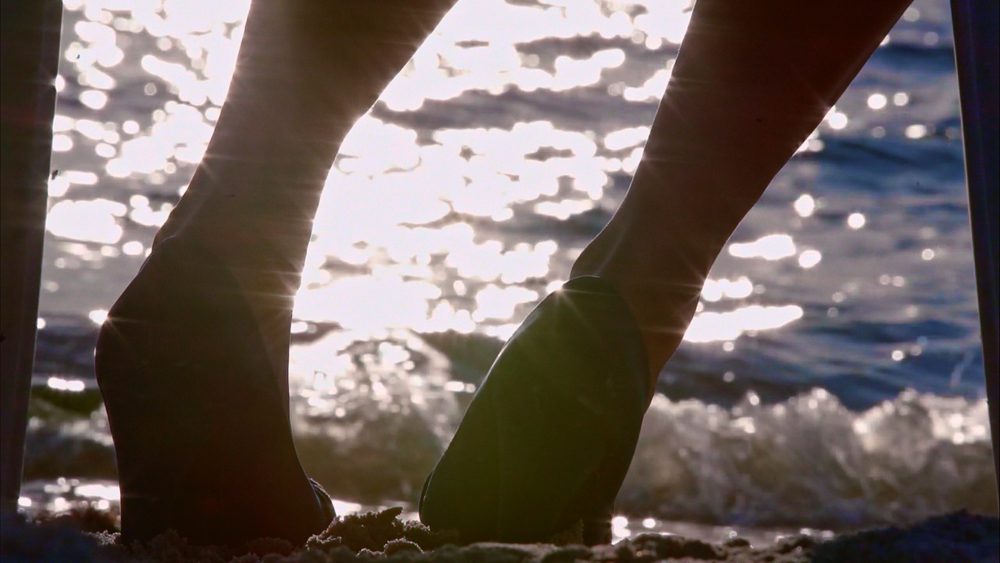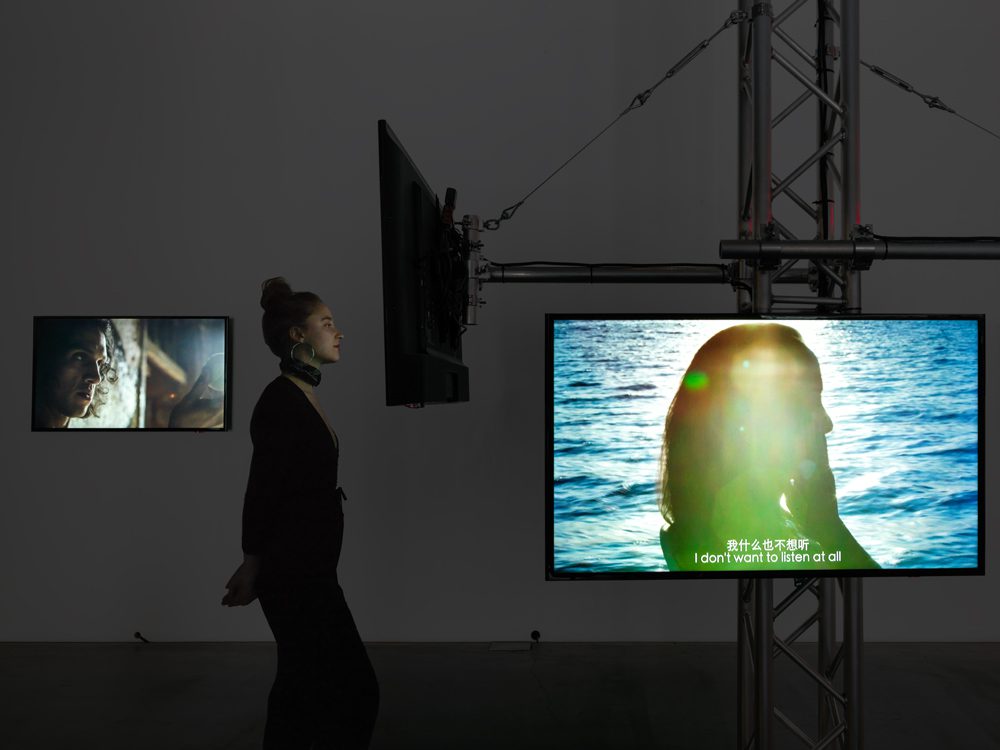Liquid City: Cheng Ran at the New Museum
As part of our thematic series on living with water, Ryan Lee Wong examines Cheng Ran’s 15-video installation at the New Museum in New York, which combines disparate narratives of the city’s residents and geographies.

A still from Cheng Ran’s Diary of a Madman (Dead Horse Bay), 2016. HD video and stereo sound. Courtesy the artist; K11 Art Foundation, Wuhan; and Galerie Urs Meile, Beijing and Lucerne.
The first video in Cheng Ran’s epic, multi-channel exploration of New York, Diary of a Madman, 2016, is a still, painterly shot of an oyster. It sits on a balcony overlooking a street. Its flesh is pearly and moist. The video is funny and bizarre, and, referencing New York’s history, the perfect prelude to a series of other videos on dislocation and circulation in the city. From prehistoric times to the early 20th century, the Lower Hudson River was lined by miles of oyster beds. Pollution and overharvesting decimated the population. In Cheng’s video, the oyster is plucked from its habitat and thrown into the middle of the concrete city, struggling to survive out of water.
Starting with that oyster, a series of 15 videos unfolds around the perimeter of the ground floor gallery of the New Museum of Contemporary Art in New York. Many of the videos are six minutes or less, giving the exhibition the feel of a YouTube playlist or flipping through a picture book. Cheng Ran wrote and directed these videos while on a three-month residency at the museum, scouring the city for unusual locations, trying to give a new perspective to this over-photographed, over-populated place.
Most of the videos are short vignettes in which an actor repeats a line or delivers a brief monologue. One man, seemingly stuck in a water tower, proclaims, “I was born free.” Another lies on the Williamsburg bridge wondering, “Why am I here?” A couple kisses, then the video cuts to them having sex in a steamy bathroom. A woman sits in a plastic chair on a beach, broken glass bottles around her feet, asking, “Do you think this is reality?” In the last video on the gallery’s perimeter, a man sits at the mouth of a sewage outlet, then explores an abandoned boat still docked in the water. It’s a tour of the city through its waterways—bridges, towers, bathrooms, shores—the forces that surround and feed it.
Each scene is cinematic, a rich portrait of a setting and a person. Almost like the American Pop artists of the ’60s, Cheng’s videos pluck a moment of melodrama from the longer narrative of these characters’ lives. It’s a quintessential urban experience: There’s something very familiar about watching New Yorkers wander around, asking themselves terrifying existential questions. In this city, we pass floods of people on the subway, glimpse them through apartment windows. In Cheng’s videos, we suddenly hear their thoughts, too.
All of the actors are local and non-Chinese, but they speak Mandarin (a few also speak Russian or a language Cheng invented for the work), and the videos are subtitled. Language acts to dislocate us: The English-speaking viewer is made to feel like a stranger, to imagine being in this city as a visitor.

Installation view of Cheng Ran’s Diary of a Madman, 2016, at the New Museum of Contemporary Art, New York. Fifteen-channel video installation with HD video and stereo sound. Courtesy the artist; K11 Art Foundation, Wuhan; and Galerie Urs Meile, Beijing and Lucerne. Photo by Maris Hutchinson/EPW Studio.
A couple of the videos in the cycle depart from the dominant motif of characters reciting lines and instead point to Cheng’s other interests. For example, one video zooms in on pigeons illuminated from behind by the bright signs of Times Square. It’s similar to Cheng’s Rock Dove video from 2009, not on view in this exhibition, in which he clustered some pigeons in a room and filmed them hopping around madly as he flicked fluorescent lights on and off. The videos speak to the anxieties of modern life, the effects that unnatural environments might be having on our psyche.
Cheng is known for reinterpreting and building upon classics of cinema and literature. His The Sorrows of Young Werther, 2009, is a four-channel lyrical video inspired by Goethe’s novel; for Secret Notes to Nan Goldin, 2013, he films himself writing philosophical missives to her like “What is love.” Similarly, Diary of a Madman references a short story by the transformative Modernist writer Lu Xun, itself inspired by the story of the same name by Nikolai Gogol. In Lu Xun’s story, the “madman” believes that his brother, villagers, and all of Chinese society are conspiring to eat his flesh, and humans in general. For Lu Xun, who promoted liberalism and scientific development, cannibalism was an allegory for Chinese history, Confucian order, and the barbarisms we carry with tradition. The “madmen” of Cheng’s videos seem to be, like Lu Xun’s narrator, the sympathetic characters. But for Cheng, it is urban life, loneliness, and an abuse of the natural world that seem to cause the characters’ unhappiness.
One last video, mounted on a tower in the center of the gallery, suggests another interpretation. In a “self-portrait,” Cheng turns the camera on his own face while he delivers meditations on the city and his isolation in an unmarked space. The background is an inky black, and unlike all the other videos, it is filmed in black and white. CGI cityscapes are superimposed on Cheng’s face, and, in other shots, a silvery goop drips out of his head and hands. He literally becomes liquid, melts into the city. Like the lonely oyster, he is caught in an existential bind—not necessarily a madman, but made absurd by his dislocation.
Editor's Note
Cheng Ran’s Diary of a Madman is on view through January 15, 2017, at the New Museum of Contemporary Art (235 Bowery) in New York.



